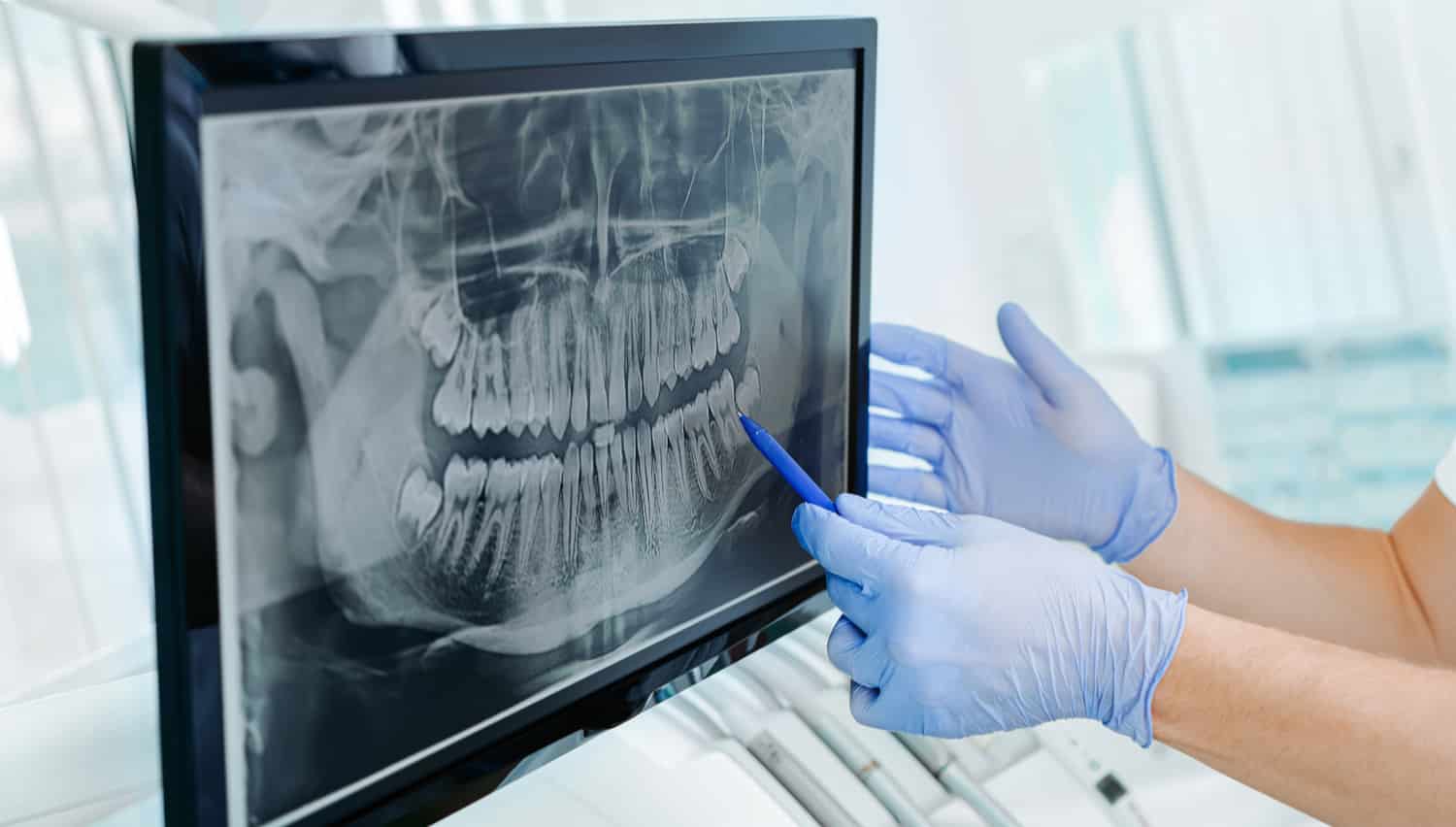Dental radiographs, more commonly known as dental X-rays, are an important tool for preserving your oral health. We use X-rays to check for potential issues and to monitor the health of your smile. By using digital X-rays, we minimize radiation exposure and the impact on the environment.
Why Dental Radiographs are Important
There is more to your teeth than what is visible above the surface. Oral health conditions can affect the tooth root, jaw bone, or spaces between teeth. With X-rays, it’s possible to see issues that may not be visible otherwise.
These may include:
- Tooth decay between teeth or beneath fillings
- Bone loss due to gum disease
- Misalignment (Note: Although we catch some orthodontic issues with a visual exam, X-rays provide more detailed information.)
- Any issues occurring below dental restorations (e.g. crowns)
- Abscesses
- Cysts
- Tumors
Dental X-rays are one of the tools we use to help diagnose oral health conditions. We use them in combination with visual exams and other techniques in order to provide comprehensive care.
After Your X-Rays
After taking your X-rays, we will review them and will let you know if there are any issues. If so, we will develop a treatment plan that is specific to you. Our care is always informative, innovative, and individualized. This means that whether we are using X-rays, another diagnostic tool, or a combination of approaches, we will make sure to let you know what we are doing, why we are doing it, and what our recommendations are for your continued treatment.
The Safety of Dental X-Rays
One concern patients sometimes have is whether the radiation in dental X-rays is potentially harmful. The good news is that dental radiographs are absolutely safe.
One x-ray of the back teeth (bitewing x-ray) exposes patients to approximately 0.001 millisieverts (mSv) of radiation. This is 90% less than a traditional film X-ray. To provide some additional context, Americans are exposed to an average of 3.2 mSv of background radiation each year.
To further keep our patients safe, we follow the ALARA principle for X-rays. This stands for “As Low As Reasonably Achievable” and is the standard for any procedures that require radiation. Some of our safety protocols include using protective aprons, using the fastest digital capture speed, and only taking radiographs as often as necessary.
If there is a possibility you may be pregnant, you should let us know. There may be times when X-rays are recommended anyway, but we will take all factors into consideration.
How Often Do You Need X-Rays at the Dentist?
The American Dental Association (ADA) recommends that patients have dental X-rays every two years. However, you may need them more frequently if you have a known oral health condition that we need to monitor. We will make an individualized treatment plan and will let you know our recommendations for X-rays. Again, radiographs are safe and have a very low level of radiation, so the risk of getting more X-rays to monitor a condition is generally less than the risk of foregoing these X-rays.
Schedule Preventive Care
Monitoring your health through preventive care reduces the likelihood of you needing costly and time-consuming dental care later on. We offer general dentistry for patients of all ages.


